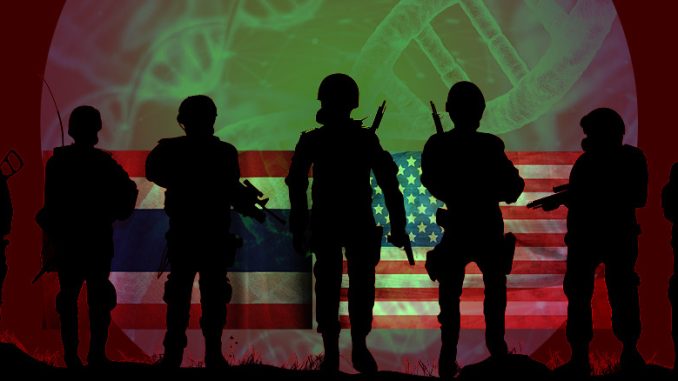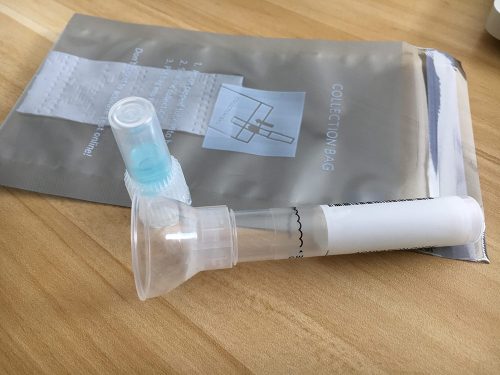
In 1954, the war was waging in the Indochina Region. Vietnam and Laos were at war for independence against the French, while in Cambodia, an uprising against the Royals was imminent. Eventually, these countries would fall under communism in 1975. Threatened by the ‘domino effect’ whereby if one country fell under communist influence or control, its neighboring countries would soon follow, Thailand joined the Southeast Asia Treaty Organization (SEATO) on September 8, 1954 along with the United States, France, Great Britain, New Zealand, Australia, the Philippines, and Pakistan.
The first batch of American Forces was sent from Clark Airfield in the Philippines arrived in Thailand on April 20, 1961. It was called Operation Bell Tone, a code name for the first F-100 deployment to Thailand.
The US installations were in Don Muang Royal Thai Air Force Base; Korat Royal Thai Air Force Base, Nakhon Ratchasima; Nakhon Phanom Royal Thai Navy; Takhli Royal Thai Air Force Base; U-Tapao Royal Thai Navy Airfield ;Ubon Royal Thai Air Force Base, Ubonratchatani and at the Udorn Royal Thai Air Force Base at Udornthani. Except for Takhli, U-Tapao, and Don Muang, all were located in the Northeast Region (Isaan) of Thailand.
More than 50,000 US servicemen were stationed in Thailand. American soldiers or GIs on R&R (Rest and Recreation) leave from Vietnam also traveled in and out of Thailand regularly. It brought an economic boom to the hotel and entertainment industry, adding $111 million to the economy during that period.
When the Vietnam War ended in April 1975, the government ordered the US military personnel out of Thailand, not later than 1976. The GIs left behind women; their companions and wives during their stay. But they also left a legacy that has become the ‘forgotten secret’ – the luuk khreung or Thai-Amerasians. Fifty-seven years later, this secret is coming out in the open, hoping to find recognition from the United States.
Luuk Khreung
Luuk khreung means children with Thai elite lineage, usually a paternal connection. But Thailand’s involvement in the Vietnam War gave birth to a negative connotation – children of ‘prostitutes’. The term Amerasian is used for mixed-race children born out of the US military presence in Asian nations which started after World War 2. 1
In 2004, the Pearl S. Buck Foundation estimated around 5,000-8,000 Thai-Amerasians. Some of them were able to immigrate to the United States under the 1982 Amerasian Immigration Act. An undetermined numbers are still left in Thailand; invisible and discriminated. 2
- Tanong Pirunproi was born on November 27, 1962. His father was probably among the first batch of Operation Bell Tone. He knows nothing about his father, except that his mother and GI father met in Sattahip, Chonburi. His mother eventually married a Swiss national.
- Kalwin Anne Pungprasert 3 may have been Thai all her life, but not her features. She has a fair skin, blonde hair, and an aquiline nose. She would have been registered as Kalwin Anne Lipford, daughter of Staff Sergeant Wayne E. Lipford of Company L Rangers 75TH Infantry 101st Airborne Division stationed in Vietnam, and Kamnuan Pungprasert of Thailand, a maid at U-tapao Air Force Base, Rayong Province. Born in Sattahip, Chonburi, her Thai identity card shows her birth date as May 21, 1971. Based on the exchange of letters between her parents and a photo, she could have been born in late 1969 or early 1970.
- Thappani Singkhamol was born on September 9, 1970 to an African-American father who left when she was born. Her mother was from Chiang Mai. She found work around the Royal Airbase in Nakhon Ratchasima. When she was young, her mother called her Andy Whait.
- Born on October 28, 1975, in Ubon Ratchatani, Meaghan Ura Butsringh Leshana was given up for adoption. She was adopted by an Australian couple and was taken to Australia. Since she has a Thai name, her biological mother, Janta Butsringh was located after 43 years. Janta mentioned Max(w)ell I. Jonson, an airman that could be Meaghan’s father.
To assimilate in the Thai society, the Amerasians were given Thai names. The fathers were either a grandfather, an uncle or a foster father. Their birthdays were also changed. With Thai names they were able to have access to government benefits and services like education and citizenship.
Thai Woman Identity
In the 1960s, Sayan Sanya, a famous country music singer popularized the song Mae Pla Ra (Pickled Fish girl) deriding an Isaan woman who wants to have a GI boyfriend. A Thai man who loves her, warns that the GI will dump her.
Phla ra is a fermented fish sauce associated with the northeastern food culture. Almost everything is seasoned with this. Saowanee Alexander, 4 a Thai professor of Sociolinguistics at Ubon Ratchatani University, claimed the song reinforces the negative stereotype of Isaan women during the war.
In Thai culture, a woman is defined as virtuous, graceful, and conservative in her sexuality and morality, and responsible for household duties. Despite using their sexuality and lowering their morality, the women were duty-bound to provide for their families. Women who could not find work in their provinces look for any jobs that could elsewhere. They found jobs around the bases.
In some cases, GIs, like Kalwin’s father wanted to take them to the United States. However, the family refused to give details about Kalwin and her mother. The relatives claimed that she died along with her mother.
The United States is another world where culture is beyond the understanding of the family living in the villages. Although Thai society accepts aspects of foreign culture, it is only to some extent, as long as this does not compromise their own culture and religion.

DNA – The Only Hope?
For the Amerasians left behind, a DNA test is their only hope of finding their GI fathers. DNA kits are available online, and samples are sent back to the United States and the results are uploaded on sites such as Ancestry.com. Immediate relatives can be found based on the same DNA. GEDCOM is also a genealogical software developed by the Church of the Latter-Day Saints, allows all DNA companies to have their DNA results uploaded. This will increase the possibilities of finding more family members.
Kalwin found her family through the DNA. Although her father died, her half-sibling is processing her documents towards obtaining US citizenship. Meanwhile, many others are still waiting for the results of their DNA testings. It will take time before many Amerasians find the identities of their fathers. The results will not automatically make them US citizens, nor provide them with their biological fathers, but the knowledge could underline their lineage and perhaps offer the cornerstone that might have been absent for much of their lives.
Eunice Barbara C Novio
Eunice Barbara C Novio is from the Philippines and presently resides in Thailand where she teaches English at Vongchavalitkul University in Nakhon Ratchasima and is adjunct lecturer at Philippine Christian University-St. Robert’s Group of Companies. She is a graduate of the University of the Philippines Diliman, with an MA in Women and Development through a Women Leadership Scholarship given by the Channel Foundation (Seattle). She has written various research and scholarly articles about women, EFL and migration. She is also a correspondent of the Inquirer.net US Bureau, a stringer for Bangkok Post and contributing columnist at the Asia Times.
Kyoto Review of Southeast Asia, 26, Trendsetters, January 2020
Also from Eunice Barbara C Novio: “English Skills Pave Ways for Filipinos in Thailand“
Notes:
- heng, E. (2014). Pearl S. Buck’s “American Children”: US Democracy, Adoption of the Amerasian Child, and the Occupation of Japan in The Hidden Flower. Frontiers: A Journal of Women Studies,35(1), 181-210. doi:10.5250/fronjwomestud.35.1.0181 ↩
- Kutschera, P.C. (2013). Military Pan Amerasians and 21st century implications for diasporic and global studies. Asia Journal of Global Studies. 6(1). Retrieved March 12, 2019, from http://www.aags.org/journal/ajgs-2014-volume-6-issue-1-issn-1884-0264 ↩
- Novio, E. B. (3 July 2019). Ex-GI uses DNA tests to help Amerasians find their fathers.Inquirer.Net. Retrieved from https://usa.inquirer.net/33547/ex-gi-uses-dna-tests-to-help-amerasians-find-their-fathers ↩
- Novio, E. B. (3 July 2019). Ex-GI uses DNA tests to help Amerasians find their fathers.Inquirer.Net. Retrieved from https://usa.inquirer.net/33547/ex-gi-uses-dna-tests-to-help-amerasians-find-their-fathers ↩

A great story that the media have forgotten for a long time, thanks to Barbara reminds the world to remember these victims the half-child (Luk Krueng). I met a young blond hair blue eyes lady who speaks perfect Thai and poor English. She is one of the lifted egg of the US’s soldiers. The US’s law states that any American child born in the foreign lands becomes US citizen but not in this case because the war child does not consider as an American asset but the products of American discipline and pleasure. The US evil’s politicians and corporation profit of killing people obviously, we must stand against these evils until they vanish. It is not only good for American citizens but also for the world.
Thank you so much for reading.
Thank you for your comment.
Thanks for writing this important article. About 15 years ago I attended a folk festival at a temple in Phetburi province with performances from all around the country. I remember a singer with a very strong, beautiful voice who must have had an African-American father as she had dark skin and very curly hair. I was too shy to approach her but I wish that I knew her story.